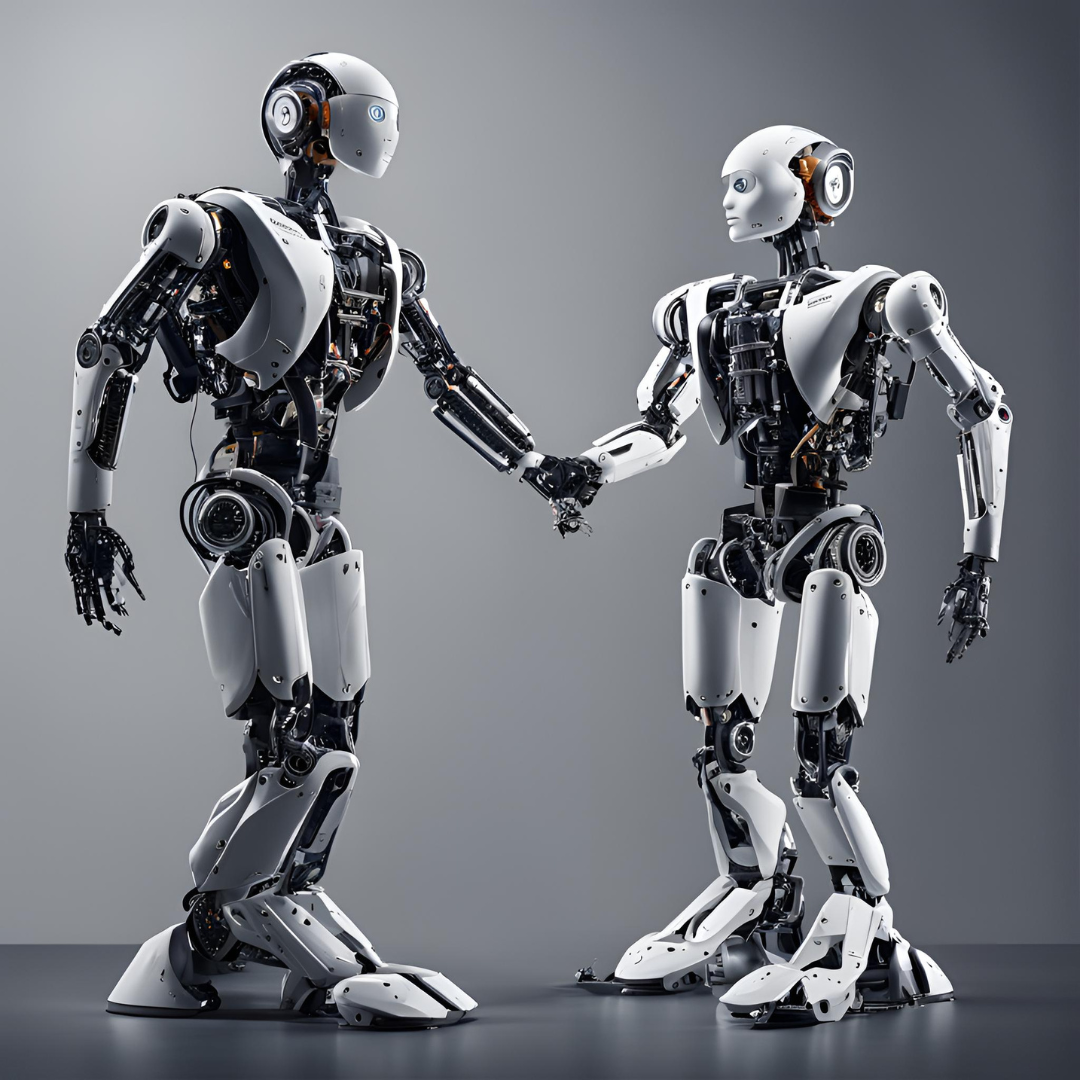Recent advances in robotics technology have revolutionized businesses and improved lives in ways that were previously only seen in science fiction. Advanced robotics is changing the way we live and work in industries like manufacturing and healthcare. This blog explores the significant influence that advanced robotics has on society by examining its development, uses, and possibilities for the future.
The Evolution of Robotics
Since the first mechanical automata of ancient civilizations, robotics has advanced significantly. The development of electronics, computing, and engineering in the middle of the 20th century led to the emergence of the current field of robotics.
-
Early Developments:
-
The 1960s saw the introduction of Unimate, the first industrial robot. Manufacturing was revolutionized when it was utilized to handle hot metal at a General Motors factory.
-
Robotics technology developed during the following several decades as advances in sensors, actuators, and control systems produced increasingly intelligent and powerful robots.
-
-
The Rise of AI and Machine Learning:
-
Robotics has changed dramatically with the application of machine learning (ML) and artificial intelligence (AI). These days, robots can adapt to new circumstances, learn from their surroundings, and carry out complicated jobs with a higher degree of autonomy.
-
Applications for AI-powered robots are numerous, ranging from personal assistants to driverless cars.
-
Applications of Advanced Robotics
Nowadays, robots are used in many different industries to carry out a wide range of jobs, from routine to highly specialist. The following are some important fields where sophisticated robotics is having a big influence:
-
Manufacturing and Industry:
-
Automation: Automation brought about by advanced robotics has changed industry. Robots increase productivity, safety, and product quality by performing repetitive, hazardous, or precise jobs.
-
Collaborative Robots (Cobots): Cobots aid humans in jobs that call for dexterity and flexibility by working alongside them. By taking on activities that are too hard or repetitive for human workers, they increase productivity.
-
-
Healthcare:
-
Surgical Robots: Robotic surgical systems, like the da Vinci Surgical System, enable highly precise minimally invasive operations that shorten recovery periods and enhance patient outcomes.
-
Rehabilitation Robots: These robots provide individualized therapy and track patients' progress to aid in the rehabilitation of individuals with physical limitations.
-
Robotic Prosthetics: Amputees can move and operate more naturally thanks to advanced prosthetics, which use robotics and artificial intelligence.
-
-
Service and Hospitality:
-
Service Robots: Robots help with cleaning, delivery, and customer service duties in hotels, restaurants, and retail establishments, increasing productivity and improving the guest experience.
-
Personal Assistants: Robots that offer company and help with everyday chores in homes include Sony's Aibo and Amazon's Astro.
-
-
Logistics and Warehousing:
-
Automated Guided Vehicles (AGVs): AGVs move cargo around warehouses, streamlining the supply chain and saving money on manpower.
-
Drones: Drone deliveries are used to move items quickly, especially in isolated or crowded regions.
-
-
Agriculture:
-
Agricultural Robots: Crop productivity is increased and the demand for manual labor is decreased when robots are employed for planting, harvesting, and crop monitoring.
-
Drones in Agriculture: Drones are used to monitor crops from the air, giving important information on crop health and supporting precision farming.
-
-
Exploration:
-
Space Exploration: Robotic rovers and probes investigate far-off planets and moons, collecting information that is not feasible for humans to obtain.
-
Underwater Exploration: Robots known as remotely operated vehicles, or ROVs, troll the ocean floor, finding new species and studying undersea occurrences.
-
Technological Advancements Driving Robotics
Advanced robotics has been fueled by a number of technology developments that have made it possible for robots to carry out ever-more-complex jobs more effectively and independently.
-
Artificial Intelligence and Machine Learning:
-
Robots are now able to learn from data, make judgments, and gradually get better at what they do thanks to AI and ML. These technologies are essential for tasks requiring flexibility and the ability to solve problems.
-
-
Advanced Sensors:
-
With their sophisticated sensors, modern robots have a deep awareness of their surroundings. These include touch sensors, lidar, radar, and cameras, which let robots safely interact with people and objects in challenging environments.
-
-
Robotic Vision:
-
Robots can recognize and understand visual data thanks to computer vision, which is powered by AI. This capability enables robots to carry out tasks like navigation, quality control, and object recognition.
-
-
Human-Robot Interaction:
-
Robots can now comprehend and react to human commands more easily thanks to developments in natural language processing and human-computer interaction, which increases their usefulness and efficacy in a variety of scenarios.
-
-
Materials and Actuators:
-
Robotic systems that are more adaptable, robust, and effective have been made possible by advancements in materials science and actuator technologies. Materials that can replicate the suppleness and adaptability of biological organisms are used in soft robotics, for instance.
-
Challenges and Ethical Considerations
While advanced robotics offers numerous benefits, it also presents several challenges and ethical considerations that need to be addressed.
-
Job Displacement:
-
Employment displacement and the nature of work in the future are problems raised by the automation of tasks that were previously completed by humans. In the changing economy, it is critical to figure out how to retrain employees and generate new employment prospects.
-
-
Privacy and Security:
-
Data-collection and processing robots, especially those installed in homes and offices, present privacy and security concerns. It is crucial to guarantee strong data protection protocols and tackle moral dilemmas related to monitoring.
-
-
Ethical Use:
-
The use of robots in delicate fields like healthcare, law enforcement, and the armed forces presents ethical concerns regarding their accountability, autonomy, and potential for abuse. To guarantee ethical use, precise policies and legal frameworks must be established.
-
-
Accessibility:
-
Fair growth depends on ensuring that everyone, especially marginalized communities, can benefit from advanced robots. This entails tackling the price of robotic systems and encouraging inclusion in their development and use.
-
Conclusion
Modern robotics is revolutionizing entire sectors and significantly improving people's lives. Robots are becoming an essential part of our everyday lives and are changing the nature of employment and society in a number of industries, including manufacturing, healthcare, logistics, and exploration. The potential for sophisticated robotics is virtually limitless as technology develops further, indicating a time when people and robots will coexist peacefully to build a more inventive, safe, and productive world.





Leave a Reply